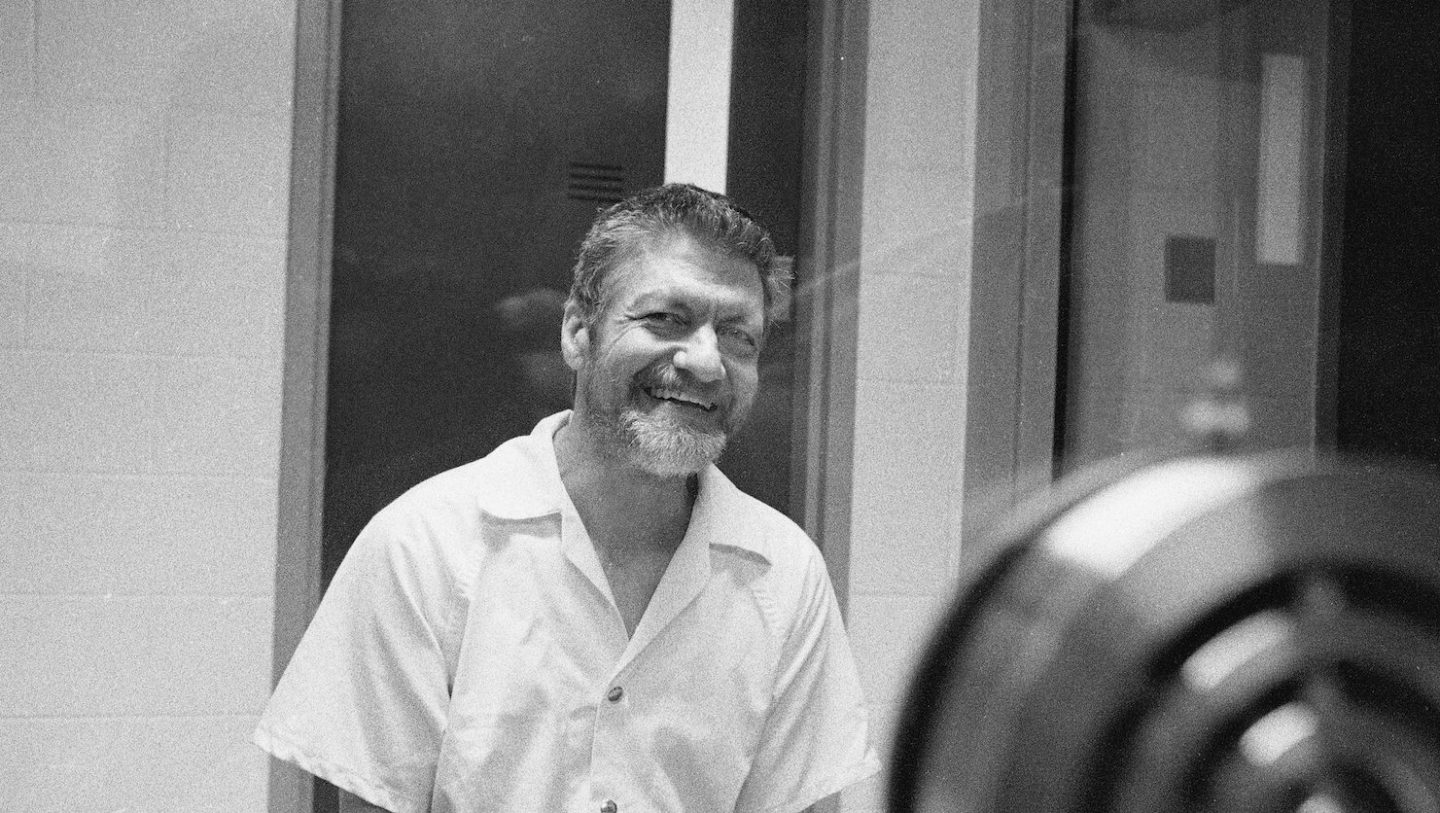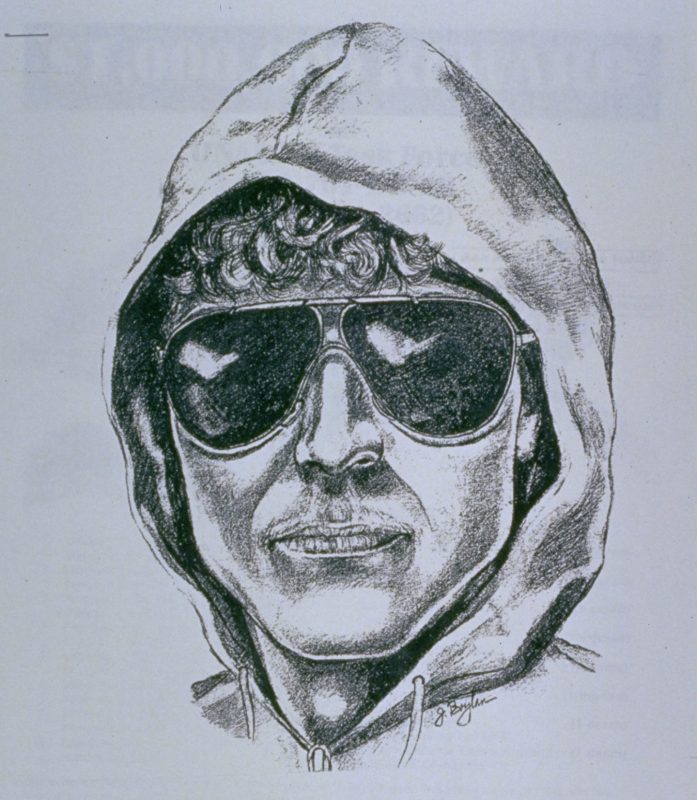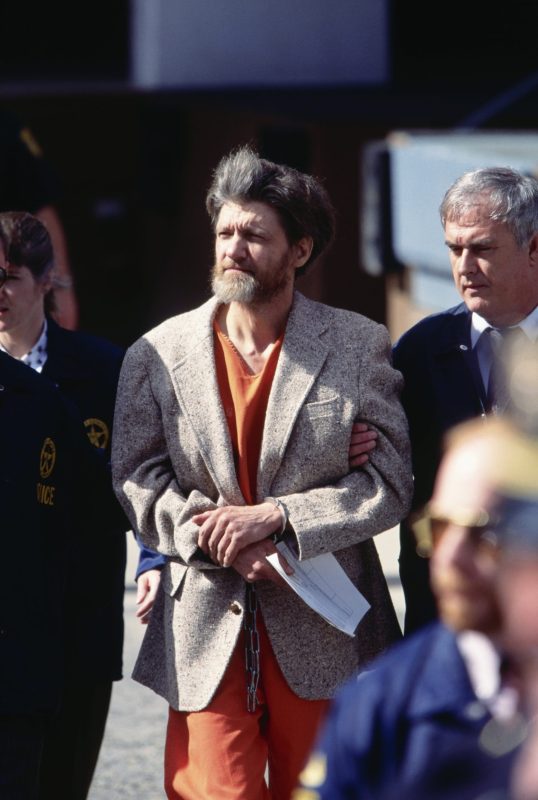On April 3, 1996, FBI agents arrested Theodore Kaczynski at his isolated Montana cabin. In 1998, the domestic terrorist pled guilty to an array of federal charges and was sentenced to life in prison, avoiding the death penalty. (The Unabomber is currently in Colorado’s federal prison known as Supermax, whose inmates have included Boston Marathon bomber Dzhokhar Tsarnaev, World Trade Center terrorist Ramzi Yousef and mobster Salvatore “Sammy the Bull” Gravano.)
The Discovery Channel’s miniseries Manhunt: Unabomber, in which Kaczynski is portrayed by Paul Bettany (A Beautiful Mind), premieres tonight.
Carrie Christoffersen, Curator of Collections for Washington, D.C’s Newseum which has partnered with Discovery, discusses some of the reasons Kaczynski and his attacks on technology still hold our attention after two decades (as well as the Newseum’s truly unique Unabomber artifact and how Kaczynski feels about them having it):
His nickname. It came from the FBI. Kaczynski’s habit of targeting universities and airlines led them to take the “un” and the “a” to come up with “una” which they combined with “bom” from “bombing.” Hence the UNABOM case and the Unabomber as the authorities began to pursue a person with what Christoffersen termed a “hyper-opposition to technology.”

His background. People who enter Harvard at 16 and earn Ph.D.s in math before becoming professors at U.C. Berkeley aren’t generally seen as future killers. However, Kaczynksi showed signs of mental illness—in particular, he complained people were conspiring against him. He also became a devout Luddite. (His sister-in-law recalls him writing, “Technology has already made it impossible for us to live as physically independent beings.”) In time he largely exiled himself from the world, entering that cabin with no running water or electricity in 1973.
He struck the people who knew him as harmless. Even as evidence started to emerge of his true identity, his brother David continued to insist, “Ted’s never been violent. I’ve never seen him violent.” Indeed, in one of the bizarre ironies of the case, David appears to have helped Ted construct his longtime home. “That’s our understanding,” Christoffersen said. “It was some brother time they had spent together in the woods building this cabin, trying to maintain a relationship.”
The sketch. Sketch artist Jeanne Boylan’s drawing of a man in dark glances and a hoodie was based on the recollection of a Utah woman who saw him briefly in 1987 placing what turned out to be a bomb by a computer store. (In addition to universities and airlines, computer stores proved a favored target for the Unabomber.)

His unnervingly long career. The Unabomber’s first bomb was noted in 1978. Before his arrest in 1997, he was believed to have mailed or hand-delivered 16 of them. He killed three people, but the total could have been much higher. In addition to injuring 23, he occasionally targeted airlines. Most disturbingly…
He seemed impossible to capture. Living largely in insolation in Montana, Kaczynski was a man off the grid. There were few chances to expose him as he so carefully avoided people and kept building increasingly sophisticated bombs. The Unabomber also made a point of constructing them from “scrap” materials, to ensure he left as little forensic evidence as possible. He even picked his victims at random through library research. (“It didn’t appear to have any rhyme or reason, although to him, I suppose, it did,” Christoffersen said.) It is terrifying to consider how long he might have avoided capture if not for…
The manifesto. Spanning 35,000 words, the Unabomber demanded its publication in exchange for an end to his attacks. It posed a major ethical dilemma. “Are we bowing to the demands of the terrorists?” Christoffersen said. “Are we going to inspire copycats?” Law enforcement, however, wanted it published and ultimately the Washington Post ran an eight-page spread with the financial support of the New York Times. Investigators believed a reader might be able to provide clues to the identify the Unabomber. They were correct, though the person who turned Kaczynski in was still unexpected.
Found by family. Ted’s own brother David and his wife made the link. (Ted’s sister-in-law, a professor of philosophy, thought it seemed similar to a 23-page essay Ted sent her husband.) When the FBI raided his cabin, they found a live bomb and knew they had their man, leading to the plea bargain to avoid the death penalty. David received a $1 million reward from the FBI and donated the bulk of it to victims’ families.
The post-arrest photos. In particular, this shot of him being dragged into court lived up to his “mad genius” tag, combining the hair of a hermit with an orange prison uniform and a coat befitting the professor he once was.

The bizarre fate of his home. In 2010, a Montana real estate company drew national attention after they reduced the price of Kaczynski’s 1.4 acres from $154,500 to $69,500—still inflated above the usual $50,000 asking price for the area—while urging potential buyers to
“Own a Piece of U.S. History: Home of the Unabomber.” (They also noted it offered “great fishing and hunting.”)
Of course, that price didn’t include his notorious 10′ by 12′ cabin. Why? “It is on loan to us from the FBI,” said Christoffersen. (“We call it an artifact, they might still call it evidence,” she added.)
Of course, one person strongly objected to its exhibition at the Newseum: Ted Kaczynski. Even by his standards, his complaints were surreal.
“He made the suggestion it was injurious to the victims and the victims’ families,” Christoffersen said. (She quickly noted, “We have not found victims or victims families to be of that same opinion.”)
Meaning the Unabomber, who bombed people at random, had put himself in the position of championing those he once terrorized. Christoffersen perfectly summed up this final bizarre twist: “I don’t know that anyone took that to be entirely heartfelt.”
The largest artifact in Washington, D.C.’s Newseum exhibition, “G-Men and Journalists” (now “Inside Today’s FBI”) is the 10-by-12-foot cabin where Unabomber Theodore Kaczynski lived and was arrested in rural Montana as seen on June 17, 2008. (TIM SLOAN/AFP/Getty Images)This article was featured in the InsideHook newsletter. Sign up now.























